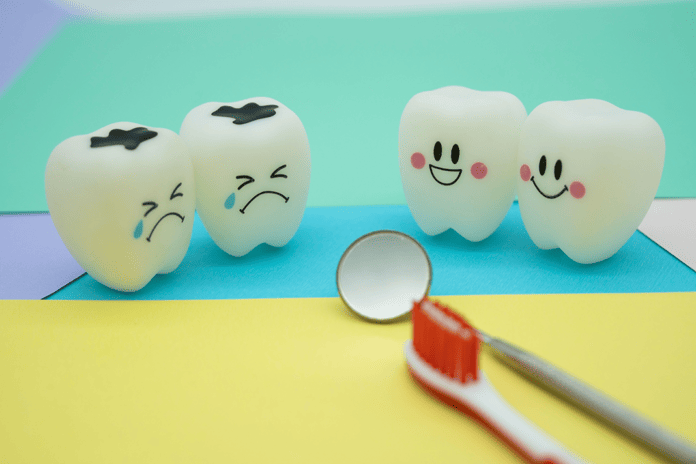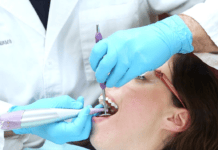Dental caries is defined as a “biofilm-mediated, sugar-driven, multifactorial, dynamic disease that results in the phasic demineralization and remineralization of dental hard tissues.”1 It is a progressive and chronic process enabled by the continuous provision of a sugar source, often combined with substandard oral hygiene habits, as well as other factors such as the mineral composition of the saliva and the extent of exposure to a fluoride source.6
So, what does this mean for dental professionals? The dental community clearly understands dental caries as a major area in society with a never-ending need for outreach and preventive endeavors. As a result, it is imperative that we remain refreshed on the basics that guide our efforts to help our patients.
Dental caries, or tooth decay, has been observed for as long as history has been documented, but it wasn’t until the early 1900s when the scientific study began to shed light on a means of classification and theories of treatment strategies. Dr. Greene Vardiman Black, or as he is more well known as Dr. G.V. Black, became known as the Father of Operative Dentistry after he developed a classification system to identify caries based on the type of tooth affected and the surface of the tooth affected, as well as the severity of the lesion.4
Although these classifications are still in use today, it is important to note that the theories of countless dental pioneers led us to the use of the prevention strategies we use today. The American Dental Association discusses that the previous practices of “fix it when it’s broken” shifted years ago with the realization of caries as a continuous, multifactorial disease that requires multiple types of intervention that must be tailored to each individual based on their needs. The association stated, “Systematic methods of caries detection, classification, and risk assessment, as well as prevention/risk management strategies, can help to reduce patient risk of developing advanced disease and may even arrest the disease process.”1
So, let’s refresh. Much of what we’ve learned and practiced comes from a combination of methodologies (i.e., CAMBRA, ICDAS, ADA CCS) that revolve around the concept of treating each patient individually by addressing several factors and applying necessary restorative and preventive interventions.2 For example, The International Caries Classification and Management System, ICCMS, outlines the process for caries control and management3:
Classification
The first step is to conduct a full assessment of the patient’s risk factors to tooth decay by evaluating the following factors:
- Clinical presentation of demineralized lesions and severity: Chart location and severity of carious lesions, as well as clinical evidence of demineralized lesions. Important to note, as well, are existing restorations that can pose as potential areas of plaque accumulation and areas at risk of recurrent decay.
- Radiographic presentation of demineralized lesions and severity: Identification of carious lesions at interproximal locations is typically not realistic from a clinical view. Radiographs will provide a more accurate assessment of the extent of decay.
- Oral hygiene assessment: Bacterial plaque contains various types of acid by-products that are responsible for breaking down the tooth structure and developing a cavitated lesion. Effective management of the patient’s oral hygiene is vital in establishing an optimal environment for caries prevention.
- Dietary assessment: Risk factors such as forms and frequency of sugary or carbohydrate-heavy foods and drinks, snacking habits, and smokeless tobacco use should be discussed with the patient to determine which modifications should be made.
- Medical history review: A study conducted in 1994 revealed that one of the most common side effects of most frequently prescribed medications that present in the mouth is xerostomia, or dry mouth.5 Because saliva serves as a protective mechanism for the teeth against the acidic byproducts from bacteria, the lack of a salivary source can make caries prevention quite difficult. For this reason, dental professionals should pay close attention to address potential issues with xerostomia for maximized caries control.
- Review patient motivation/compliance factors/barriers to care: As clinicians, we want the best possible outcomes for our patients. The reality is that factors such as motivation, language barriers, financial limitations, cultural differences, etc. can weigh heavily on a patient’s ability or willingness to comply with prescribed dental interventions. Depending on the number of barriers present with any one patient, treatment may need to be paced in order to prevent overwhelming them.
Management
After the assessment of all factors has been completed, the treatment plan can be formulated appropriately to address each factor as unique to that patient.
- Determination of caries risk level: Once risk factors have been identified, they should be evaluated to determine the likelihood of developing more carious lesions and creating a treatment plan specific to that those risk factors, complete with restorative and preventive interventions, as well as a recall schedule.
- Behavior modification and patient education: Although patient behavior modification can be the most important part of any treatment plan, it often becomes the most is part. There are many reasons why compliance is hard to achieve, but doing so can maximize tooth preservation and minimize restorative needs. Assessment of the patient’s barriers to care will determine how to tackle the reasons behind their history of reluctance to follow through with previous treatment plans or even seek care at all. Prior negative experiences, financial limitations, immobility or handicap, and many other factors should be addressed through thorough conversation to determine the best course of action based on the patient’s desired outcomes. Follow through by teaching the patient about the basic principles of caries etiology and their role in caries prevention. As providers, we tend to take full responsibility for treatment outcomes, but we can’t forget that our care only goes so far. We should ensure that our patients are equipped with the knowledge and understanding necessary to effectively care for themselves.
- Restorative treatment planning: Caries that has extended into the dentin generally will not remineralize back to a point of health. Plan restorative treatment in a prioritized schedule (i.e., treat those with the most extensive decay to prevent the need for root canal or extraction) and maintain open communication with the dentist if you have concerns about the treatment plan. The end goal is to preserve function to the greatest extent possible.
- Sealant and anticariogenic application: A set of clinical practice guidelines was developed in 2016 that recommends the use of pit-and-fissure sealants for youth and teenagers. Sealants are utilized as a preventive intervention in reducing plaque-retentive pits and fissures of occlusal surfaces.6
- Recall appointments for patient behavior modification and follow up: The time following completion of restorative treatment, dental hygiene treatment, and fluoride treatments are just as important as the restorations themselves. Reinforcing with our patients some basic oral care and dietary practices will increase the likelihood that they will be able to continue to foster the remineralization process, bringing their dental health closer to a state of being stable with long term, lasting benefits.
Dental hygienists play a major role in ensuring that our patients receive complete follow-up care and education. The evaluation and assessment processes are vital to effectively treating and restoring function to the best possible extent. Resources such as those referenced earlier provide an easy to follow plan with an evidence-based protocol based on the risk factors identified.
Restorations can be placed over and over, but treating the root causes of the disease and including the patient as an active role player in their own treatment plan can be difficult at times but will increase the likelihood of treatment success and long-term oral health.
Now Check Out the Self-Study, Peer-Reviewed CE Courses from Today’s RDH!
Listen to the Today’s RDH Dental Hygiene Podcast Below:
References
- American Dental Association. (2018). Caries Risk Assessment and Management. Retrieved from: https://www.ada.org/en/member-center/oral-health-topics/caries-risk-assessment-and-management
- Rechmann, P., Chaffee, B., Rechmann, B., Featherstone, J. (2019). Caries Management by Risk Assessment: Results From a Practice-Based Research Network Study. CDA Journal. 2019; 47(1): 15-24. Retrieved from https://www.cda.org/Portals/0/journal/journal_012019.pdf
- Pitts, N., Ismail, A., Martignon, S., Ekstrand, K., Douglas, G., Longbottom, C. (2014). ICCMS™ Guide for Practicioners and Educators. Retrieved from https://www.iccms-web.com/uploads/asset/59284654c0a6f822230100.pdf
- Jain, S., Jain, H. Legendary Hero: Dr. G.V. Black (1836-1915). Journal of Clinical and Diagnostic Research. 2017; 11(5): ZB01-ZB04. doi: 10.7860/JCDR/2017/17462.9813
- Smith, R.G., Burtner, A.P. Oral side-effects of the most frequently prescribed drugs. Special Care in Dentistry. 1994; 14(3): 96-102. Doi: 10.1111/j.1754-4505.1994.tb01112.x
- ADA (2019). Dental Sealants. Retrieved from https://www.ada.org/en/member-center/oral-health-topics/dental-sealants












